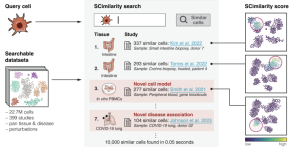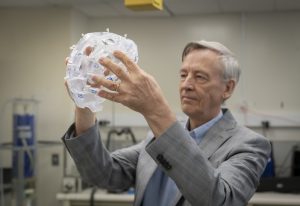Tracking organ aging and disease
January 9, 2024
At a Glance
- Researchers found that proteins in the blood can be used to track the aging of individual organs, and that faster organ aging increased the risk of disease and death.
- The technique could be used to predict a person’s risk for certain diseases and develop more targeted interventions.
Different people age at different rates. Two people of the same age may show dramatically different signs of aging. Scientists developed the concept of biological age to account for this variation. Biological age can be estimated based on various biomarkers. Research in animals has found that different organs in the same organism can also age at different rates. But it’s not clear if this is true in humans, or whether organ aging affects the risk of disease.
An NIH-funded research team, led by Dr. Tony Wyss-Coray at Stanford University, sought to develop a way to track the aging of various organs in the human body. To do so, they analyzed gene activity in different organs and measured levels of almost 5,000 proteins in blood plasma from more than 5,600 people across the adult lifespan. The results appeared in Nature on December 6, 2023.
Using gene activity data, the team first determined that almost 900 of the proteins were enriched in a single organ. They then trained machine learning models to estimate biological age using blood plasma levels of these proteins at different ages. Models were trained for 11 organs: fat tissue, arteries, brain, heart, immune tissue, intestines, kidneys, liver, lungs, muscle, and pancreas.
The team found that almost 20% of people showed accelerated aging in a single organ. Fewer than 2% had accelerated aging in more than one organ. When the researchers examined data on nine age-related diseases, they found that many of the diseases were associated with faster aging in particular organs. For example, people with hypertension and diabetes had “older” kidneys than their same-aged peers. Older hearts were associated with atrial fibrillation and heart attacks. People with accelerated heart aging had more than double the risk of heart failure over the next 15 years. For most organs, accelerated aging led to a 15-50% greater risk of death from any cause.
The approach gave insights into brain aging, too. A protein called pTau-181 is an established blood-based biomarker for Alzheimer’s disease. The researchers found that proteins associated with brain aging could predict Alzheimer’s progression as well as pTau-181. High levels of both brain aging and pTau-181 were associated with greater risk than a high level of one or the other alone.
In addition, proteins associated with artery aging predicted the onset of mild cognitive impairment. These proteins implicate certain molecular processes in early cognitive decline. Identifying the molecular processes underlying disease could lead to new strategies to prevent or treat them.
“We can estimate the biological age of an organ in an apparently healthy person,” Wyss-Coray explains. “That, in turn, predicts a person’s risk for disease related to that organ.”
He notes that the technique will need to be tested on many more people before it can be used in the clinic. If it holds up, it could allow providers to treat people who are at risk before they get sick.
—by Brian Doctrow, Ph.D.
Related Links
References: Organ aging signatures in the plasma proteome track health and disease. Oh HS, Rutledge J, Nachun D, Pálovics R, Abiose O, Moran-Losada P, Channappa D, Urey DY, Kim K, Sung YJ, Wang L, Timsina J, Western D, Liu M, Kohlfeld P, Budde J, Wilson EN, Guen Y, Maurer TM, Haney M, Yang AC, He Z, Greicius MD, Andreasson KI, Sathyan S, Weiss EF, Milman S, Barzilai N, Cruchaga C, Wagner AD, Mormino E, Lehallier B, Henderson VW, Longo FM, Montgomery SB, Wyss-Coray T. Nature. 2023 Dec;624(7990):164-172. doi: 10.1038/s41586-023-06802-1. Epub 2023 Dec 6. PMID: 38057571.
Funding: NIH’s National Institute on Aging (NIA); Michael J. Fox Foundation; Alzheimer’s Association; Milky Way Research Foundation; Nan Fung Life Sciences; Stanford University; National Science Foundation.







